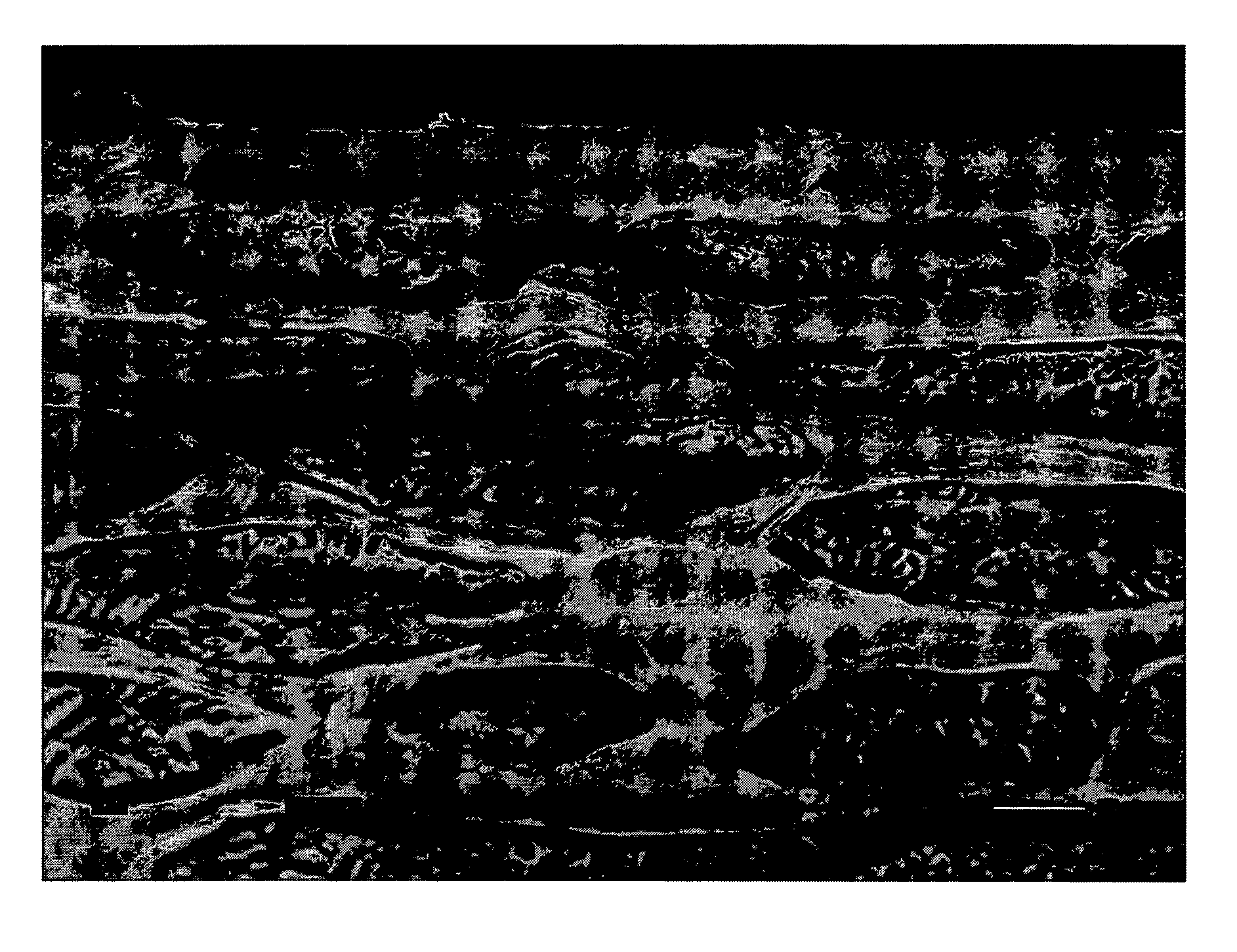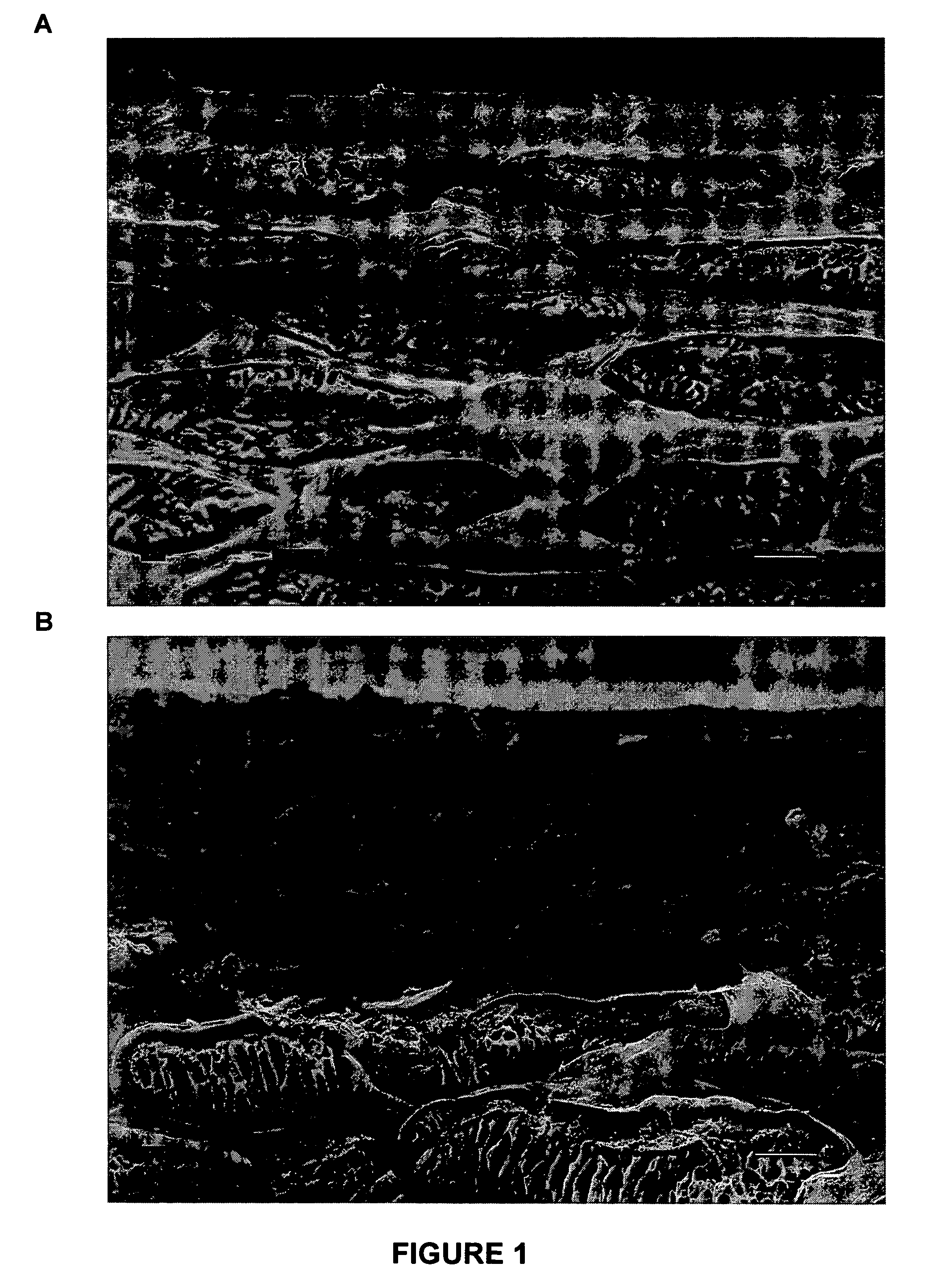Method for dehydro-roasting
- Summary
- Abstract
- Description
- Claims
- Application Information
AI Technical Summary
Benefits of technology
Problems solved by technology
Method used
Image
Examples
example 1
[0031] Dehydro-roasted yellow onions were produced by obtaining an amount of fresh whole onions. The onions were treated manually with knives to remove the roots, root plate, tops, and skins. The onions were then cleaned with running water. After cleaning, the onions were put through conventional slicing equipment (Urschel Model G Dicer) whereby the onions were sliced at a length as long as possible and a width of ⅜th of an inch. The sliced onions were placed in a fixed bed convection dryer (Proctor & Schwartz Dryer), having an air temperature of about 140° F. to about 150° F. The onion slices were dried until the moisture level was reduced by approximately 25% by weight of the onion slices. Analysis was conducted, where it was determined that solids in the onion slices increased from 10.7% to 13.8%.
[0032] The partially dehydrated onion slices were then transferred to a narrow mesh conveyor belt for branding and roasting. The onion slices were transported on the belt at a speed set...
example 2
[0034] Dehydro-roasted red peppers were produced by obtaining an amount of fresh red bell peppers. The red peppers were treated manually with knives to remove the cores with extra care taken to not break up the pepper meat during the coring process. After cleaning, the red peppers were sliced with conventional slicing equipment (Urschel Model J Dicer), whereby the red peppers were sliced into strips with a width of ⅜th of an inch and a length as long as possible. The sliced red peppers were placed in a fixed bed convection dryer (Proctor & Schwartz Dryer), having an air temperature of about 140° F. to about 150° F. The red pepper slices were dried until the moisture level was reduced by approximately 50% by weight of the red pepper slices. Analysis was conducted, where it was determined that solids in the red pepper slices increased from 9.5% to 17.5%.
[0035] The partially dehydrated red pepper slices were transferred to a narrow mesh conveyor belt for branding and roasting. The red...
example 3
[0037] Dehydro-roasted zucchini squash were produced by obtaining an amount of fresh zucchini squash. The zucchini squash were treated manually with knives to remove the undesirable parts. After cleaning, the zucchini squash were sliced with conventional slicing equipment (Urschel Model OV Dicer), whereby the zucchini squash were cross-cut into pieces with a width of ⅜th of an inch. The sliced zucchini squash were placed in a fixed bed convection dryer (Proctor & Schwartz Dryer) having an air temperature of about 140° F. to about 150° F. The zucchini squash pieces were dried until the moisture level was reduced by approximately 45% by weight of the zucchini squash pieces. Analysis was conducted, where it was determined that solids in the zucchini squash pieces increased from 6.5% to 13.3%.
[0038] The partially dehydrated zucchini squash pieces were transferred to a narrow mesh conveyor belt for branding and roasting. The zucchini squash pieces were transported on the belt at a speed...
PUM
 Login to View More
Login to View More Abstract
Description
Claims
Application Information
 Login to View More
Login to View More - R&D
- Intellectual Property
- Life Sciences
- Materials
- Tech Scout
- Unparalleled Data Quality
- Higher Quality Content
- 60% Fewer Hallucinations
Browse by: Latest US Patents, China's latest patents, Technical Efficacy Thesaurus, Application Domain, Technology Topic, Popular Technical Reports.
© 2025 PatSnap. All rights reserved.Legal|Privacy policy|Modern Slavery Act Transparency Statement|Sitemap|About US| Contact US: help@patsnap.com


